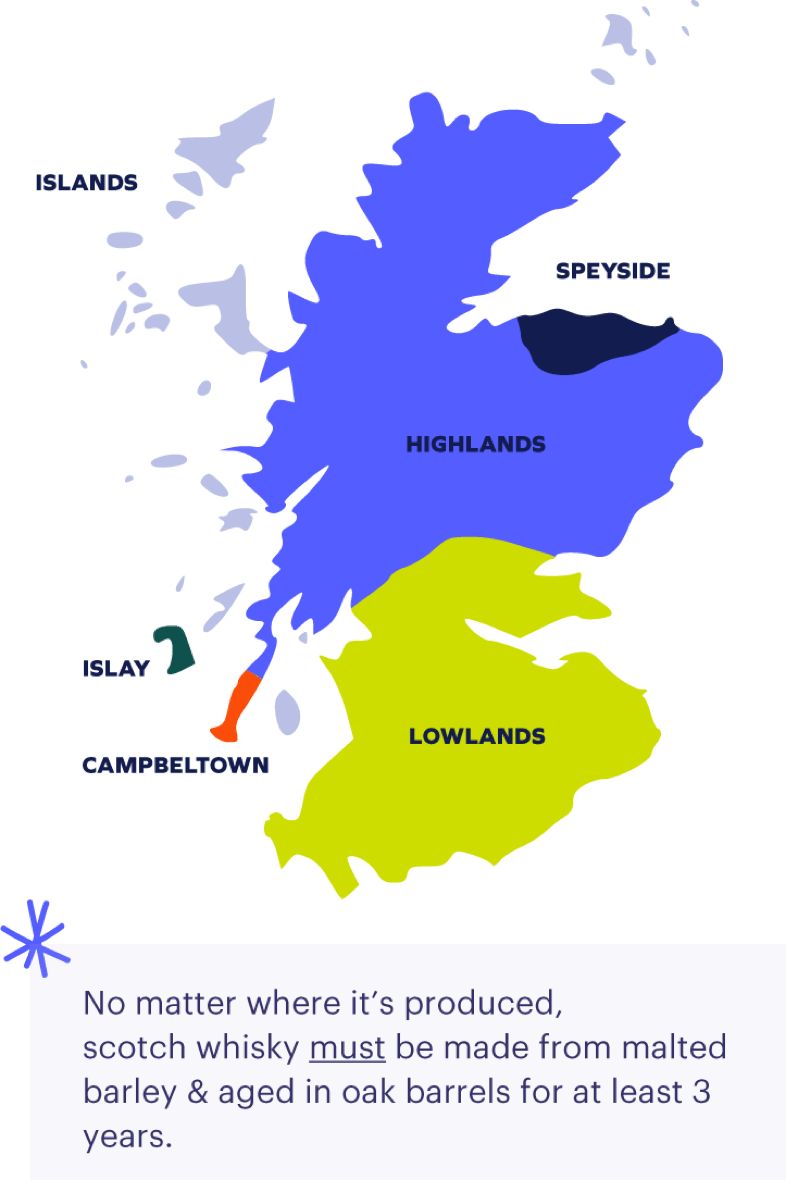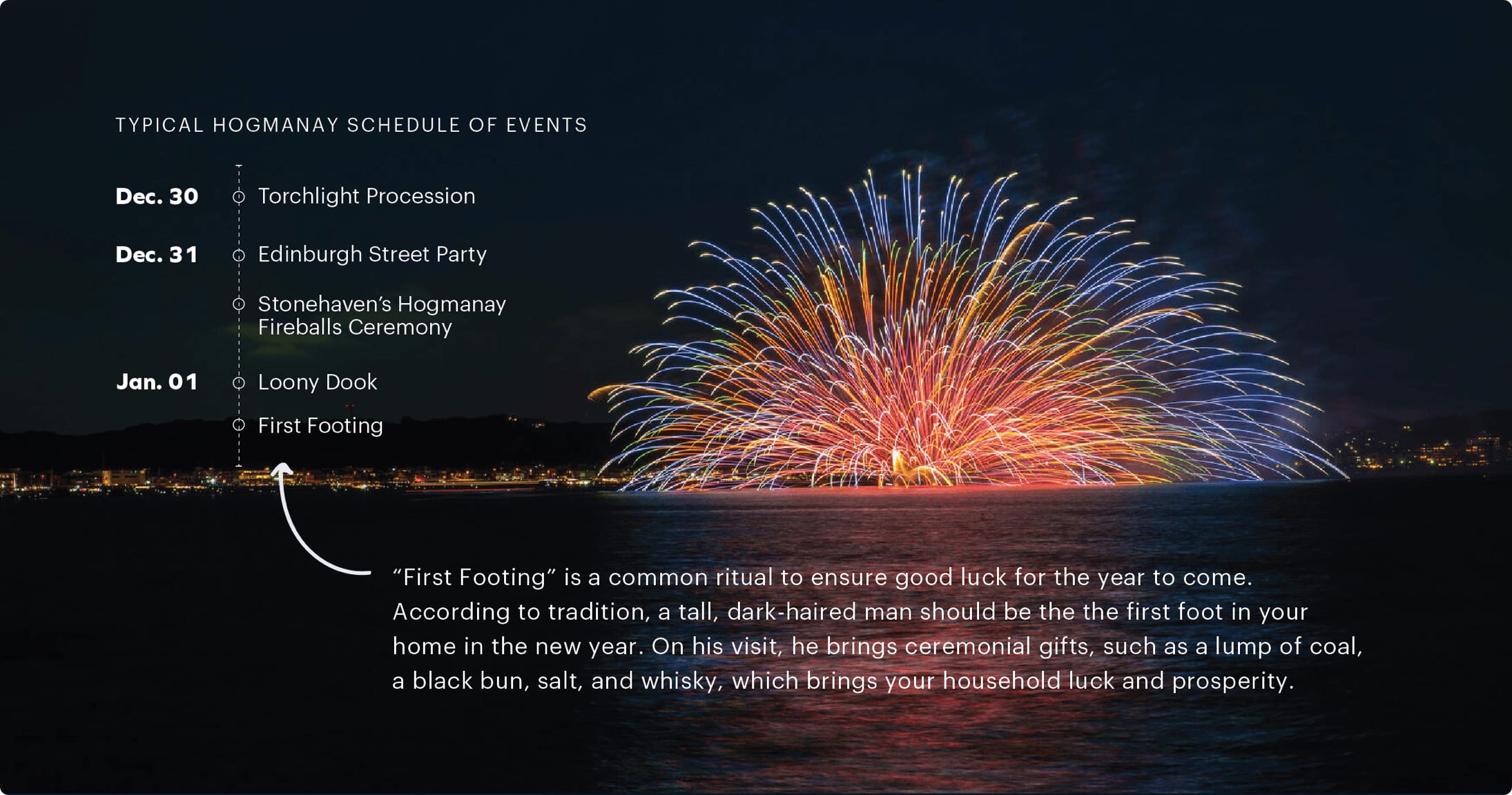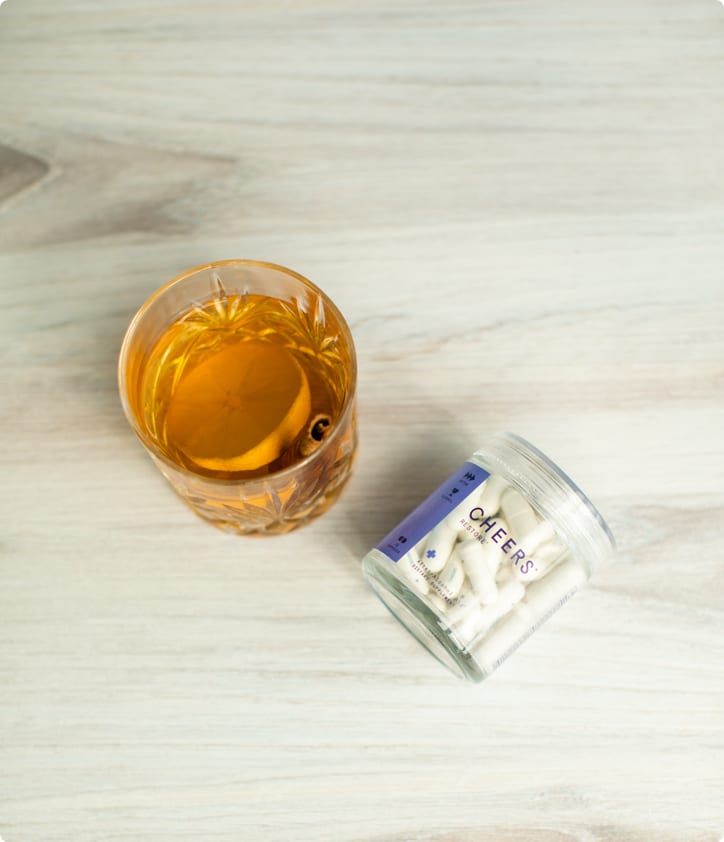How can we help?
Email us at hello@cheershealth.com anytime or browse below.

Get 15% off!
+ first dibs on secret sales
🇺🇸
Made in the USA
with globally sourced ingredients.
✅
GMP Registered
Good Manufacturing Practices
There’s no denying that whisky is the staple drink of Scotland. Yes, we spelled that right! Whisky (no e) refers to spirits made directly in Scotland, thus helping distinguish the country of origin. It’s also informally referred to as Scotch. Whiskey (with an e), on the other hand, refers to drinks distilled in the US & Ireland.

There are 6 whisky regions in Scotland: Speyside, Highlands, Lowlands, Campeltown, Islay, and Islands. Each region plays its own role in whisky production and, similar to wine, has its own flavors & profile variations based on where it is produced. Speyside alone accounts for roughly 60% of whisky distilleries in the country and is best known for its robust single malts. The Lowlands feature a lighter & grassier whisky, while the Highlands flavor varies greatly based on sub-region (while this expansive area contains only 25% of the country’s distilleries, it touts the highest volume of whisky production in Scotland). The coastal regions of Campeltown, Islay, and Islands pay homage to their ocean fronts with briny, salty notes in their whisky.
There’s nothing quite like your local Scottish pub. It’s the hub of Scottish drinking culture, complete with live folk music and history in the form of old paintings strung along the walls. With its dim lighting and favorite Scottish spirits on display, these old watering holes have always functioned as a warm place for friends & family to gather – whether you’re a local or just passing through town.
The Scottish way to say Cheers is “Slàinte mhath!” which means “Good health!” and is pronounced “Slanj-a-va.” Whether you’re in a pub, distillery, or in the company of loved ones, the Scottish will “Cheers” to pretty much anything.
You’re probably used to shaking hands and giving your name as a formal way to introduce yourself. In Scotland, this is rarely the case among locals. Your name is very personal and the Scottish don’t give up this information readily, so it’s best to follow their lead. Instead, find some common ground to connect over, toast over a drink, and let things flow from there.
Drinking in Scotland is usually done in a series of rounds, with each friend buying a round at some point for the group. The exception to this rule is when you’re in the company of an elder or someone you owe respect to, in which case jumping to pay for the bill might actually offend them. In those scenarios, it’s best to wait it out and let them move first.
If you end up striking up conversation with some locals, you might quickly learn that the Scottish are a pretty animated bunch and they might interject you mid-story. Interruption is actually a sign of interest, though, so take those conversations in stride and expect the pace to move quickly.
America: “New Year’s Eve is a big deal here.”
Scotland: “Hold my whisky.”
Regarded as one of the most important Scottish holidays, Hogmanay (translated to “last day of the year”) is a 3-day New Year’s festival jam-packed with events. Because Christmas wasn’t a publicly recognized holiday from the 17th century until 1958, it’s likely that the modern Hogmanay traditions originated back in the 17th century as a way for family & friends to gather together and exchange gifts.
The ceremonial torchlight procession marks the beginning of the festivities on December 30th, creating a river of fire down the Royal Mile in Edinburgh. On New Year’s Eve, Princes Street hosts a giant street party filled with live music, DJs, street performers, outdoor bars, street food, and of course, midnight fireworks. If it couldn’t get any better, every reveler gets a complimentary Johnnie Walker Highball Cocktail to kick off the night. To continue the celebration into New Year’s day, participate in the Loony Dook tradition on January 1st. These brave participants willingly take a plunge in the freezing River Forth, dressed in the craziest outfits they could find, to raise money for charities.


Cheers is the leading alcohol-related health brand focused on developing products that support your liver and help you feel great the next day. As a student at Princeton, Cheers’ founder Brooks Powell discovered the potential advantage of incorporating the natural plant extract Dihydromyricetin (DHM) into an after-alcohol consumption regimen and began working with his professors to make products that addressed the unique challenges of alcohol-related health. . Since its official launch in 2017, Cheers has sold more than 13 million doses to over 300 thousand customers. The research-backed line of products includes three versions of supplemental pills and powders – Restore, Hydrate and Protect. Cheers is now releasing read-to-drink versions of their products—starting with Cheers Restore. Each product is equipped to meet different health needs such as rehydration, liver support, and acetaldehyde exposure. Cheers places an equal emphasis on the responsibility and health aspects of its mission and vision. The brand’s mission is bringing people together by promoting fun, responsible, and health-conscious alcohol consumption. The vision is a world where everyone can enjoy alcohol throughout a long, healthy, and happy lifetime. For more information, visit cheershealth.com or join the social conversation at @cheershealth.